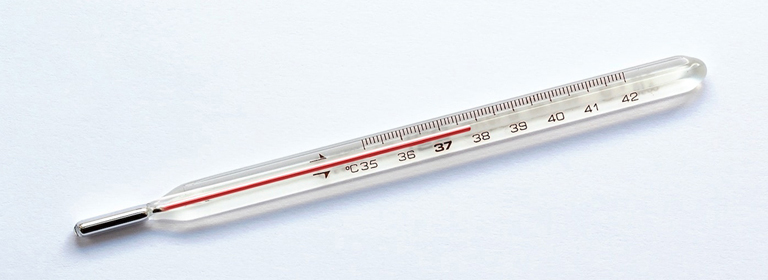Temperature | Physics
What is Temperature

In the most basic terms, temperature is a measure of how hot or cold something is. But there's much more to temperature than that! In this article, we'll discuss the definition of temperature, the different temperature scales, and how to convert between them.
Temperature is a measure of the average kinetic energy of the particles in a substance. The SI unit for temperature is Kelvin (K), but temperature can also be measured in degrees Celsius (°C) and degrees Fahrenheit (°F).
Temperature Scales
Temperature is measured using a thermometer according to well-defined scales of measurement. Temperature scales allow us to measure temperature into measurable numerical values, which help us compare different quantities. The most common temperature scales are Fahrenheit, Celsius, and Kelvin.
Both the Fahrenheit scale and the Celsius scale are based on two reference points (the freezing and boiling point of water) and are thus considered to be relative temperature scales. The Kelvin scale is an absolute temperature scale, which has its zero point at absolute zero (the point at which all particle motion ceases).
- The Celsius scale, which most of us are familiar with today, is denoted in degrees. It has 0° as the temperature of water at its freezing point and 100° as its boiling point.
- The Fahrenheit scale traditionally used in the United States is laid out slightly differently, with 32° marking the freezing point and 212° signifying boiling.
- The Kelvin scale is a temperature scale where zero is the coldest possible temperature, known as absolute zero. Unlike Celsius or Fahrenheit, it has no negative temperatures. Water freezes at 273 K, and it boils at 373 K under standard conditions.
How to Convert Between Temperature Scales
Temperature conversions can be a bit tricky, so it's important to know how to convert between different scales. You can convert between these scales using the equations in following table:
| Temperature Conversion Equations | |
|---|---|
| Convert From | Equation |
| Celsius to Fahrenheit | |
| Fahrenheit to Celsius | |
| Celsius to Kelvin | |
You can use our online temperature converter for quick and easy conversions.
Why Do We Measure Temperature
Temperature measurements are critical because they provide us with the information we need to manage the environment, keep particles moving, understand the body's reaction to environmental changes, and much more. Temperature is also used in many fields, including science, meteorology, medicine, and food production.
The Earth's temperature plays an important role in the global climate and can be used to predict and monitor weather patterns. Temperature is also used to measure the reaction of objects to heat, making temperature a valuable tool in the science and engineering fields.
Frequently Asked Questions
- What was the hottest temperature ever recorded on earth?
- The hottest temperature ever recorded on Earth is 134°F (56.7°C), which was recorded in Death Valley, California, in 1913.
- What was the coldest temperature ever recorded on earth?
- The coldest temperature ever recorded is a whopping minus 128.6°F (-89.2°C), which was measured in Antarctica in 1983.
- Which is the warmest planet in our solar system?
- Venus is the hottest planet in our solar system, with a surface temperature of 869°F (465°C).
